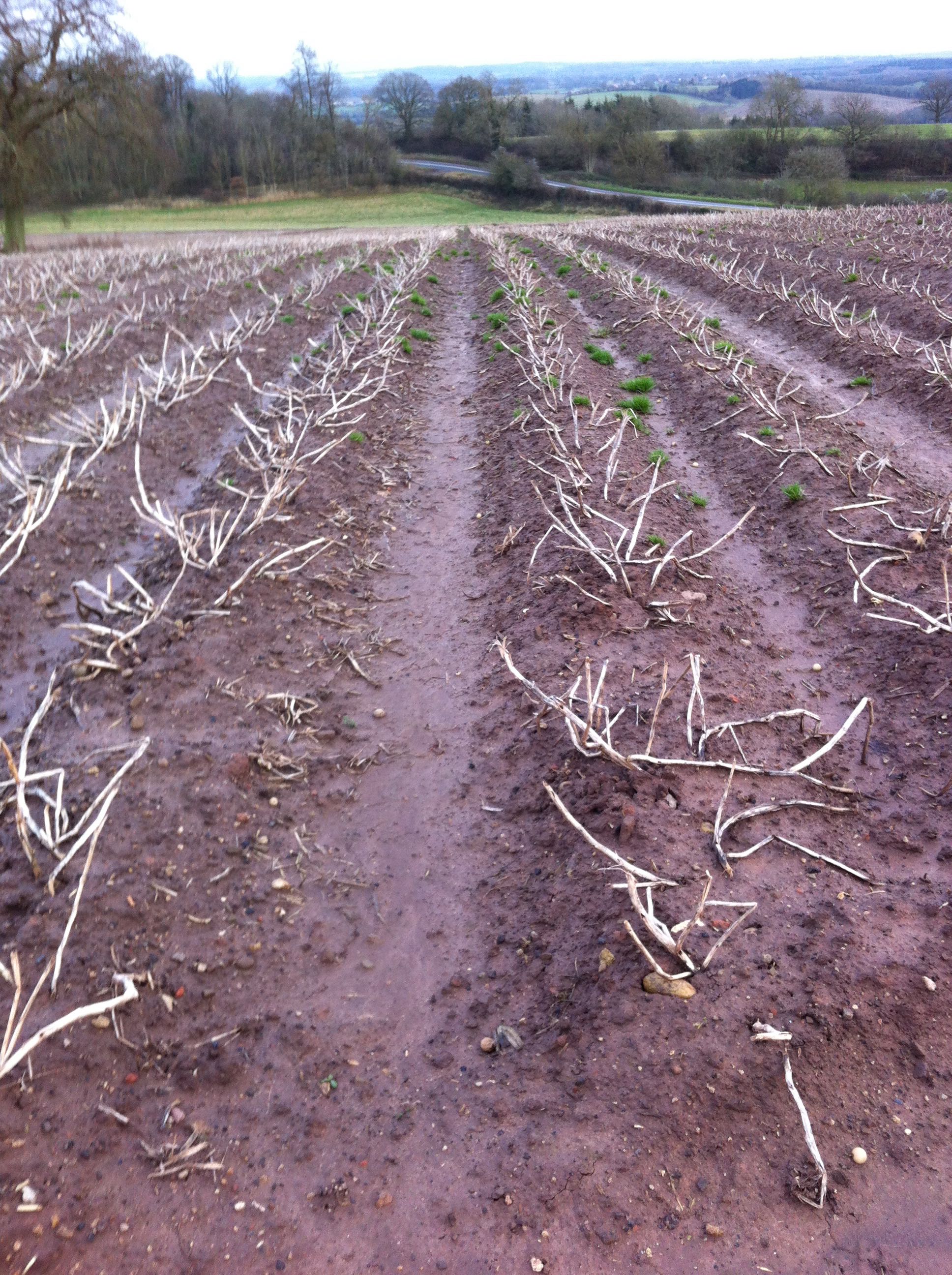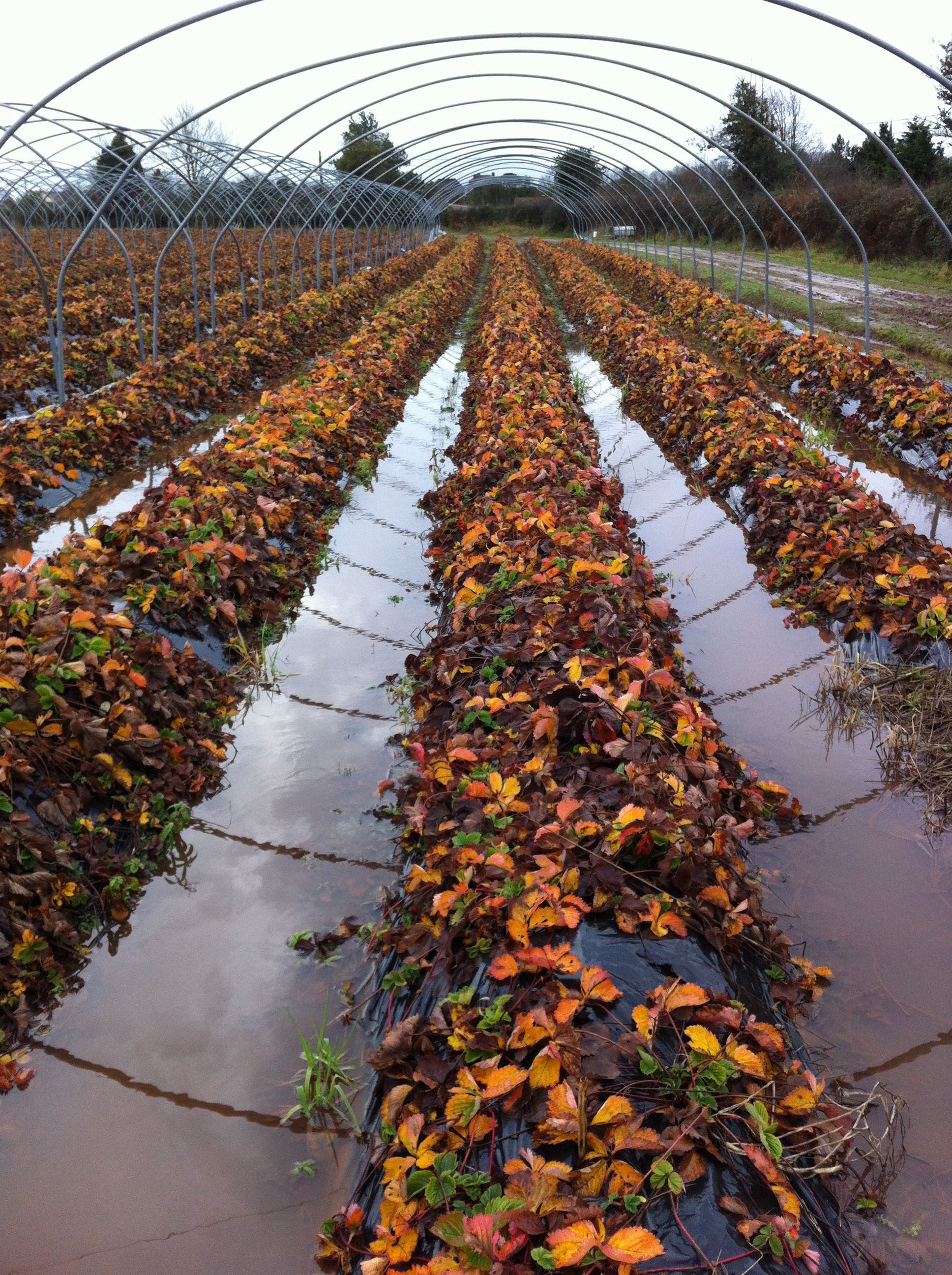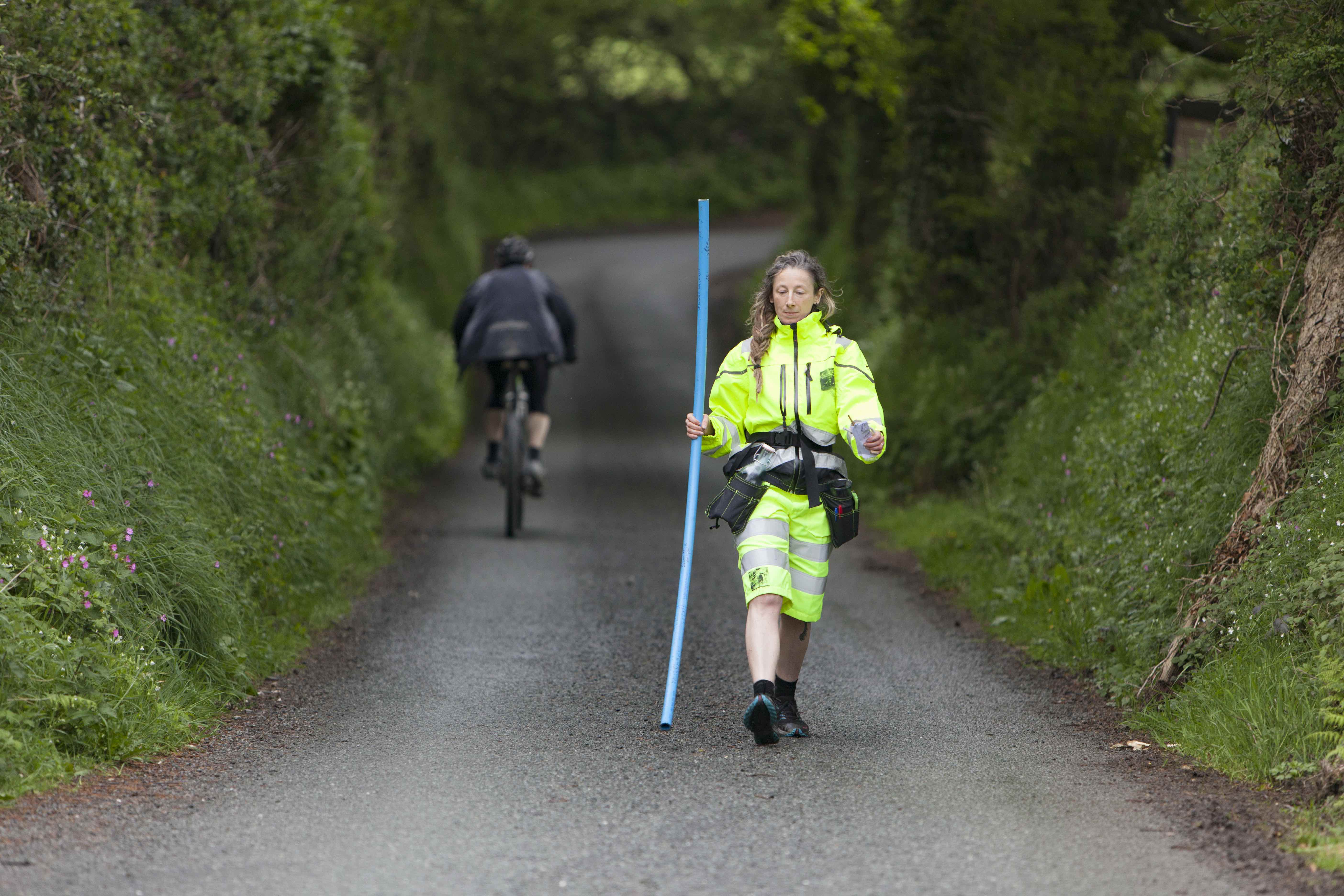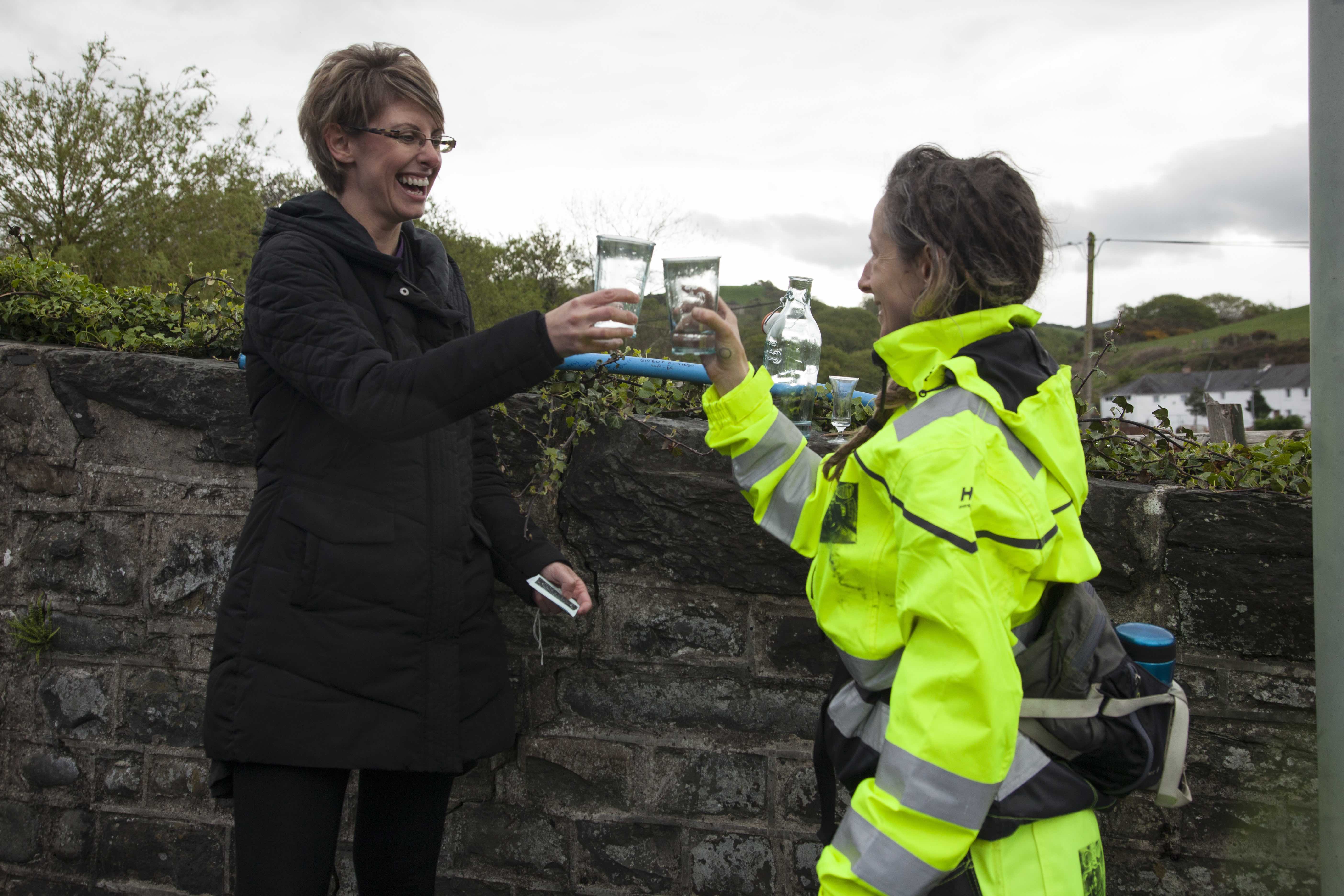An emerging, eco-activist, pedestrian performance practice, playfully presented in four acts: (i) a dictionary definition; (ii) a recipe or score; (iii) a catalogue of selected performance works; (iv) a brief scholarly reflection.
1. a definition
tracktivism |ˈtraktɪvɪz(ə)m|
noun [ mass noun ] informal
walking along tracks with activist intent : an emerging field of eco-activist performance that synthesises the practices of walking art and one-to-one performance in (predominantly) rural landscapes.
tracktivism borrows from the aesthetic scoring and discipline of walking art to shape the route or rules of a walk around an ecological theme; the walking of those routes by the solo performer may then be employed to facilitate unexpected (usually one-to-one) encounters with strangers, to talk or otherwise engage on the theme that the choreography of the walk describes.
ORIGIN the term was conceived by Welsh walking artist Jess Allen (2018) as a tongue-in-cheek antidote to slacktivism (a blend of slacker and activism): internet slang for the sedentary trend of participating in ‘feel-good internet campaigns that [don’t] actually help anybody or [have] political impact[;] pretending to care while sitting on your butt in front of a computer’ (Urban Dictionary 2015).
2. a recipe
tracktivism
Preparation time: as long as you’ve got
Serves: one performer, many participants
Some generic instructions – a score – to make a tracktivist performance work. You may add or omit steps to taste, depending on your artistic palate. Season liberally with a mix of irreverence, quixotism, playfulness & profundity.
1. Choose your landscape. (Must be rural?) Look at it differently. Listen to the silence. See what looks hidden. What is being ignored? What are we not talking about? What has been lost or forgotten about? Some things can be remembered by walking them (back) into existence.
2. Devise a score. Map a route. Write rules. Think about how the shape of a walk, or the rules you devise to make it, can reflect the issue you are interested in, or draw attention to our ecological enmeshments. How can you map, measure & make ecological footprints? How can you walk a question mark? What patterns can your walking drawing attention to? Pathways of human consumption or ecological (dis)connection can be animated or writ large on the landscape by the stylus of the walking body.
3. Invent an intervention. Aside from your rucksack & walking attire, you might want to carry or wear something unusual that signifies your intention; that provokes curiosity & invites people into encounter. An antique milkaid’s yoke? 50 low-energy lightbulbs? Head-to-toe hi-vis? Or this intention may simply be legible in your manner, in your deportment: in how you carry yourself. Then think about what kind of memorable meaningful exchange you can perform for a stranger. What small rituals can you facilitate? What objects can you gift? How might you engage the senses: touch, taste, smell…?
4. Walk your route(s). Go it alone. Wet feet/sunburn/nettle stings/blisters are inevitable (delete as appropriate to season or location). Getting lost is likely. Deviations are acceptable. Surrender is not. Walk hard, to make your meetings more meaningful: the epic scale of the walk set against the intimacy of person-to-person connection. For your commitment to be legible to others it’s got to raise your pulse, literally & politically (no matter how small that ‘p’); take yourself out of your comfort zone. Cultivate ‘completist tendencies’ (Armitage 2015: 84). But remember: be polite. Political = polite + playful.
5. Talk – and listen – to the strangers you meet. Be receptive. Encourage encounter & curiosity. Allow any way into conversation to happen. Then explain what you are doing. Make your ‘offer’. Let the dialogue meander. Talk about the weather. Hold space for silence. Allow moments for mystery. Listen, and be prepared to change.
6. Share your experiences. Make some (more) art: a film, a book, some bunting, an installation. Host a gathering. Write a blog. Write a doctoral thesis. Tell a friend. Who’ll tell a friend. Rolling their eyes at the quixotic endeavour but talking nonetheless.
This is tracktivism gone viral. Or at least ensemble.
3. a catalogue
All in a Day’s Walk |ôl in ə dā’s wôk| 2012-13
From all in a day's work (of something unusual or difficult) accepted as part of someone's normal routine or as a matter of course.
A score for a month-long performance, in which I lived entirely within the distance I could walk away from home and back in a day, eating only the food that is grown, processed and obtainable entirely within this distance. I could travel only foot, accepting no lifts, using no public transport, walking for 6 days a week. I could accept no hospitality or food from hosts or visitors that did not meet these criteria. I could cook only on locally-sourced wood.
My walks were a means of fetching (rarely foraging) food, and meeting and talking to the people who make, process or sell it: farmers and growers, shopkeepers, walkers, woodsmen, butchers, bakers, artisan cider-makers. We talked about the weather and the walking, but, invariably, we also talked about food, hunger and the space in between.




Drop in the Ocean | dräp in ðē ˈō sh ən| 2013-18
A very small amount compared with what is needed or expected.
“I couldn’t get you to the ocean,” she said. “But there was nothing stopping me bringing the ocean to you” – Neil Gaiman, The Ocean at the End of the Lane (2013).
A six-day walk in six, widening concentric circles around a focal point: the ripples around a drop ((((((.)))))). Carrying water with an antique milkmaid’s yoke and buckets, I invite the strangers I meet to make a wish by taking a stone from the water in one bucket and placing it in the other. Before making their wish, as they hold the stone in their wet hand, I ask them four questions about water, for silent contemplation: from memories and experiences, to senses and sounds.
The title of the work is a reference to its aesthetic – the simple visual image of the ripples that form around a drop – but also to its underlying ethical pretensions. The circular shape of the walks – or roughly circular, since the routes are inevitably determined by rights of way and the restrictions of shopping centres and water crossings – are crudely emblematic of the repercussive ripples on the wider planet that emanate from the thrown stone of our everyday actions in our local environment. Somewhere in that rippling is lost the connection between our abstract understanding of ecological problems, and our quotidian, embodied responses to them. So, this piece is asking, how might we begin to reconcile them through sensorial (re)engagement with and through the medium of water?


.
Trans-missions |tranzˈmɪʃ(ə)n, trɑːnz-, -ns-|2015
from trans- [ prefix ] across; beyond; on or to the other side of: mission [ noun ] an important assignment; a strongly felt aim, ambition, or calling: transmission line [ noun ] a conductor designed to carry electricity or an electrical signal over large distances with minimum losses and distortion.
Does anyone ever follow the tracks of the pylons? Even their maintainers? From the countryside into the city – isn't that where they're going? […] I feel obliged to make that walk one day, but I don't relish it: to be a living cross-cutter, a cross-sectioner, an economic particle, a physics, to ride the line of illuminating, incinerating power […] Dare? Ride the bodies electric? Hmm. (Smith 2003: n. p.)
A solo, linear, long-distance walking performance, the route was determined by the public rights of way that follow as closely as possible the electricity transmission lines as they cross the county border to border, west to east. The rules of the performance score dictated that I must speak to or otherwise acknowledge every person I encountered, forming an unbroken line of transmission. Carrying a rucksack of 50 low-energy lightbulbs, I gave one to each stranger who invited me into conversation and who offered me a message to pass on – to transmit – to the next person I met. This message was requested in exchange for, or response to, the message I passed on from the last person I had similarly happened upon.
Tied to each lightbulb was a hand-stamped, hand-written invitation to a social gathering – a ‘midsummer picnic and outdoor art event’ – that took place at the end of the walk on the summer solstice. The gathering was held at Dragon Orchard near the village of Putley, towards the eastern border of Herefordshire; in the heart of the Big Apple cider parishes that nestle under the Marcle Ridge. The invitation included the instruction for the recipient to bring the bulb with them to the orchard, where it would form a key part of an art installation amongst the apple trees: a festoon string of 50 empty lightbulb holders, each awaiting the return of a bulb that had been handed out on the walk.

Water Treatment Walks |ˈwɔːtə ˈtriːtm(ə)nt wɔːks| 2016
from water treatment works [ treated as sing. ] chiefly Brit. a place or premises in which industrial processes are carried out:
Water Treatment Walks (2016) was a five day walk that followed 60 miles of mains water pipeline in Mid-Wales between the Dŵr Cymru water treatment works at Bontgoch, and the sea at Ynyslas: the ‘last tap on the line’ at the visitor centre on the Dyfi national nature reserve.
Wearing hi-vis work clothing, carrying a 2 metre length of blue water pipe, a bottle of tap water and two glasses, I spoke to almost every person I met, asking them: ‘if you had to make a promise to ‘treat’ water differently in future, what would it be?’. Their responses were written onto the pipe which accrued its promissory graffiti as I walked. At the end of the exchange we drank a toast together, with and to tap water. Stopping to fill my water bottle along the way from the homes and businesses I passed, I met over 60 people – in gardens, on building sites, footpaths, in kitchens – and talked about water in both English and Welsh.
An experiment in how one might reconceptualise water as something worthy of being ‘treated’ thoughtfully, and thus an attempt to admit the agency of the more-than-human in everyday human routine.


4. a brief scholarly reflection.
Walking art maps, measures, animates & thus foregrounds patterns in landscape. As such, it lends itself well to the kind of eco-activist performance practice that seeks to draw attention to pathways of ecological (dis)connection, and yet, I argue, has so far been underexplored in this context.
I am a dancer who stumbled into walking art. My first encounter with this form was through the ubiquitous work of Richard Long. Now in his 70s, his prodigious oeuvre is largely characterised by solo walks of long distance, sometimes across challenging and uninhabited terrain, often undertaken in amounts of time that indicate considerable feats of speed or endurance. Many of his walks have a particular geometric form – he favours circles and straight lines – drawn first on the map, then described on/in the landscape through the act of walking. Others are determined by strict adherence to seemingly arbitrary numerics, such as a set number of miles to be walked in a set amount of time, without specifying the shape or location of the journey (e.g. see Tufnell 2007).
Given its spatial and temporal reach and duration, Long’s work has been described as ‘sculpture on an expanded scale’ (Pope 2005-9: 1). But, as a dancer I immediately understood it as choreography on an expanded scale. Engaging with the documentation of Long’s walks, I was able to imagine their geographic shape, scale and reach from a bird’s eye perspective, imagining the walking body as ‘stylus’ on the landscape describing patterns with moving feet – in much the same way that pedestrian movement is used as a choroegraphic device in dance-making to draw attention to space rather than the complexity of movement of/on the bodies within it (e.g. see Preston-Dunlop 1998). At the same time I was also imagining being the walking body in the landscape; wondering what the textured experience of walking those journeys might be like. Given the potency of the perceptual trick this was able to turn for me, I began to wonder how the stylus of the walking body could be used differently, in an eco-activist performance practice, to literally and metaphorically ‘draw’ attention to ecological concerns in rural landscape, in ways that might be legible to an audience.
Long’s work in and with natural environments has led to various attempts to ‘co-opt him […] as a kind of mascot for the green lobby’ (Tufnell 2007: 9), something to which he is particularly resistant. I think he is right to be. While I admire the aesthetic of his work, the often abstract shapes or ‘rules’ he chooses to walk – and the often ‘unspoilt’, unpopulated landscapes he chooses to walk in – can tend to absent the human: they do not acknowledge, or can tend to obscure, anthropogenic ecological problems or even human presence. While Rebecca Solnit argues that this work serves to reassure us that ‘the human presence so crowded and dominating elsewhere is still small when measured against the immensity of lonely places’ (2001: 276), I consider it a curious delusion. And certainly one that is actively detrimental to ecological awareness if we accept that our damaging influence on eco-systems can be equally ‘immense’ even where humans are not visibly present. As Carducci puts it: ‘[t]oxic effluent, airborne particulates, and global warming do not recognize boundaries between civilized development and nature preserve’ (2009: 641). In line with Morton, I suggest that to be truly accountable ‘ecological art is duty bound to hold the slimy in view’ (Morton 2009: 159) or at least to acknowledge human entanglement with the ‘bad’ bits of ‘ecology’ as well as the ‘good’.
In the devising of tracktivism, I have borrowed from Long the notion of a shape or rules for a walk, and typically a large number of miles to walked over consecutive days. But in marked contrast, I have sought to place those shapes on – or indeed derive them from and in response to – working, inhabited, ecologically-denuded, if not ‘slimy’, agricultural landscapes. All in a Day’s Walk, worked radially outwards from home at the scale and pace of a day’s walk, using the universal need for sustenance to draw attention to how food infrastructure is no longer truly ecologically functional at the scale of the rural parish, or even county. Drop in the Ocean was more poetic: walking the circles of progressively increasing diameter to animate a geometric form which makes more patent the fact that local actions and needs ripple outwards into the world. And both Trans-missions, and Water Treatment Walks sought to make more apparent the existence and reality of utilities infrastructure (energy, drinking water). In doing so, they aimed to foreground or problematise our relationship with it: what it brings, and takes away, and how these ‘services’ connect us with wider systems or places outside our normal sphere of noticing.
As such – and unlike Long’s work and that of his minialist contemporaries – the shape or rules of tracktivist walks are not determined by abstract or ‘aesthetic’ geometry, or devised to focus on the rhythms, patterns and objects of/in ‘nature’. Rather, the walks are all spatial representations of our material interdependence, and our implication in wider ecological systems.
Of course, the map or shape alone is not necessarily enough to animate ecological perception. What I believe gives walking art its potency is that the score expressly invites us to imagine its shape as a route for walking. More than just a shape drawn onto a map, it is a proposition (or a record) of something that should be or has been walked with the bodily effort that implies. And as such it invites us to mentally to place the body in relation to landscape, wherein it becomes ‘an instrument of mapping’ space in relation to self (Sullivan 2015: 26).
The pedestrian body is, Long himself maintains, ‘an ideal means […] to explore relationships between time, distance, geography and measurement’ (2000 in Tufnell 2007, p. 39 emphasis added). Indeed, his practice was the precursor of a distinct lineage within walking art that Sullivan identifies as those practices that seek or serve to ‘reinsert individual corporeal experience into the world’, and to ‘recalibrate corporeal temporality’ (2015: 27, 31). In an era when such disorienting phenomena as time-space compression (Massey 1991) and the ‘hyperobject’[1] of climate change (Morton 2010, 2013) are compromising our sense of ecological limits and responsibilities, I consider walking as an ‘aesthetic’ measuring device is a potent tool for an eco-activist project, in that it might serve to ground the scale of self in relation to planet. In doing so, I hope it might encourage us to acknowledge and embrace our enmeshment in wider, more-than-human ecologies
Jess Allen is a performance artist from Mid-Wales. She has a PhD in quantitative biology from Aberystwyth University, and a PhD in contemporary performance from the University of Manchester. She trained as a dancer in between. She also works as an aerial performer and teacher.
jessallen.org.uk
hedgesprite@googlemail.com
Notes
[1] The ‘hyperobject’ is Morton’s coinage for ‘objects’ – from climate change, to the concept of species – that exist on a spatio-temporal scale that places them outside limits of human perception; in their entirety, they remain ungraspable to us (Morton 2010, 2013).
References
Armitage, S. (2015) Walking Home. London: Faber & Faber.
Carducci, V. (2009) ‘Ecocriticism, Ecomimesis, and the Romantic Roots of Modern Ethical Consumption’, Literature Compass, 6 (3), pp. 632–646.
Gaiman, N. (2013) The Ocean at the End of the Lane. London: Headline.
Massey, D. (1991) ‘A Global Sense of Place’, Marxism Today, 38, pp. 24-29.
Morton, T. (2009) Ecology without Nature. Cambridge, Massachusetts: Harvard University Press.
Morton, T. (2010) The Ecological Thought. Cambridge, Massachusetts: Harvard University Press.
Morton, T. (2013) Hyperobjects. Minneapolis: University of Minnesota Press.
Pope, S. (2005-2009) Walking Together: Sociality and the Art of Walking. [Online] Available at: https://sites.google.com/site/ambulantscience/Index/texts (Accessed 20 June 2014).
Preston-Dunlop, V. (1998) Looking at Dances. London: Verve.
Smith, P. (2003) ‘A Short History of the Future of Walking’, rhizomes.07 [Online]. Available at: http://www.rhizomes.net/issue7/smith.htm (Accessed 23 January 2013).
Solnit, R. (2001) Wanderlust: A History of Walking. London: Verso.
Sullivan, L. L. (2015) Walking Sculpture 1967-2015. New Haven: Yale University Press.
Tufnell, B. (ed.) (2007) Richard Long: Selected Statements & Interviews. London: Haunch of Venison.
Urban Dictionary (2015a) ‘Slacktivism’ [Online] Available at: http://www.urbandictionary.com/define.php?term=slacktivism(Accessed 5 January 2015).

